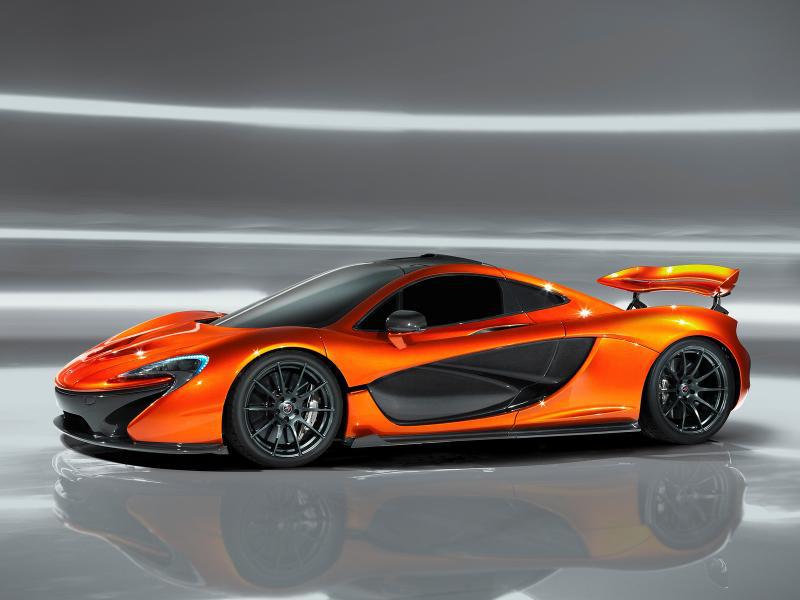With the wing retracted, no doubt, but either way that is spectacular for a car with so many exhausts and vents and scoops. Wow!(Cd is 0.34).
With the wing retracted, no doubt, but either way that is spectacular for a car with so many exhausts and vents and scoops. Wow!

I'm sorry, i just don't like the look of it. And to me, its not the successor to the F1. It's just a new car made by McLaren Intl. The F1 was bonkers, with a simple design. If it was a 'spiritual successor' they would've stuck to a simple, not Klingon design. The back looks absolutely hideous. Just look at this and remember, and do what the plates say. I would say, humph, crazy new car, but the fact they are calling it the F1 Successor it what upsets me. That car cannot be followed up. /Rant + Start the hate. Wanted to post my thoughts and I know i'm not alone lol

I'm sorry, i just don't like the look of it. And to me, its not the successor to the F1. It's just a new car made by McLaren Intl. The F1 was bonkers, with a simple design. If it was a 'spiritual successor' they would've stuck to a simple, not Klingon design. The back looks absolutely hideous. Just look at this and remember, and do what the plates say. I would say, humph, crazy new car, but the fact they are calling it the F1 Successor it what upsets me. That car cannot be followed up. /Rant + Start the hate. Wanted to post my thoughts and I know i'm not alone lol
Part of the reason the F1 looked like it did, was that it was designed with functionality in mind. Looking at the P1, it appears that goal is just as important. The looks are secondary.
The idea of F1 successor is fastest overall road car.
That was what the F1 was built to do and same with the new car.
That rear wing is bloody weird.
It's meant to be an active air brake, so it does look a little odd at full height/angle.
I guess that's just the way it forms to the body. In the normal wing mode the tips are up in the air and look really dumb.Edit, yeah it's for visuals.
I guess that's just the way it forms to the body. In the normal wing mode the tips are up in the air and look really dumb.
The top picture is the normal wing mode:By normal wing mode do you mean the wing position in the drawings and at 1:30 in the video? The only purpose for that that I can think of is the wing generating lift to deploy itself automatically. Otherwise it's not helpful.



The downforce mode has a small angle of attack and much lower camber than the airbrake mode, resulting in a reasonable amount of downforce and way lower drag. It will looks stupid but it's effective. Check this Indy 500 rear wing:
They'll tilt the wing just below stall angle for maximum L/D ratio.
I just edited my post as I'd confused their system with movable flaps. Only the P1's AOA changes.The wing camber is adjustable?
Right, I suppose L/D max would actually be too efficient for the job at hand. If that is the airbrake setting then surely it must be past that and near stall.L/D max isn't usually extremely close to stall angle though, the drag increases with the square of the lift, and when the lift starts to fail drag keeps going up because of separation.
The chord is hidden in the drawing because it shows the pointed tips. The chord of the horizontal section looks reasonable in the video, maybe tilted back slightly. We can't see the tips' section either but because they're curved up it looks like they might be contributing some sideways downforce, maybe a centering force for more stability, or to accelerate the flow off the main wing even faster.I was taking the chord line to be roughly the same as the line separating the top and the bottom of the wing in the drawing. But if that's not true and the chord line is actually at a less shallow angle, then the picture makes sense.
I have to say again that I disagree. The car screams "for aesthetics".
I don't think its easy to make the claim of "aesthetics first" at this stage. Even with a good knowledge of aerodynamic systems, the effects of even the small aerodynamic details can be very difficult to predict without the help a wind tunnel or CFD software.
I'm basing my opinion of "function first" on a report of 1300lbs of downforce on the front at 125mph. If that claim is actually correct, then this suggests quite substantial levels of total downforce for a reasonable 0.34Cd. I would argue that "function first" is most certainly correct if the above is true.
I'm sure we will find out the official figures over the next year or so, and we will have our answer for Function Vs. Form.